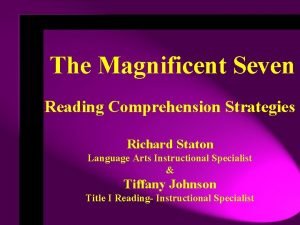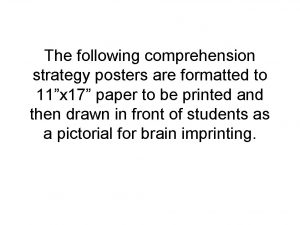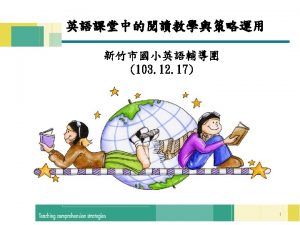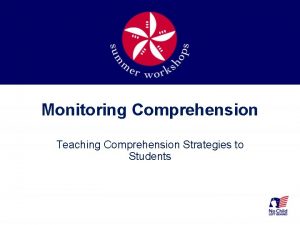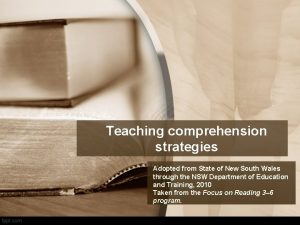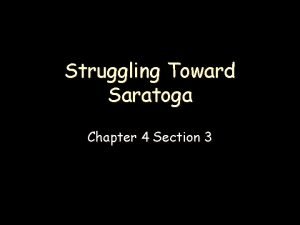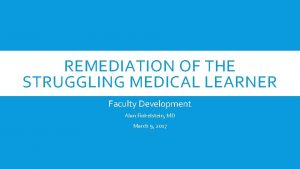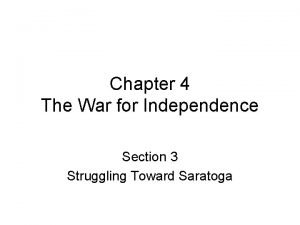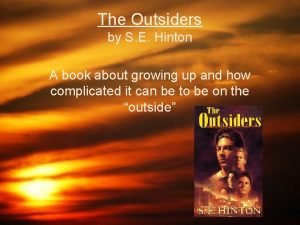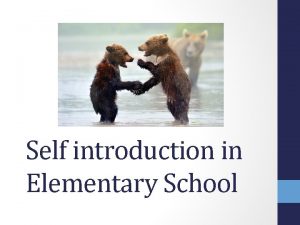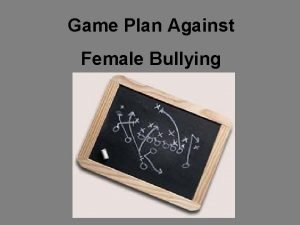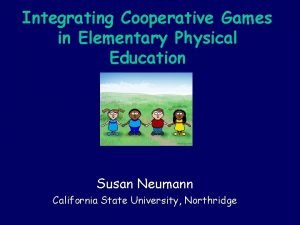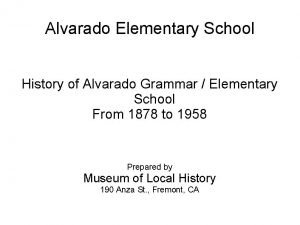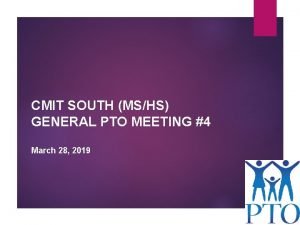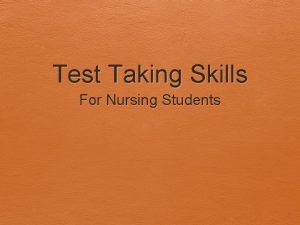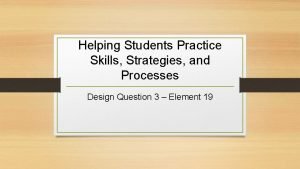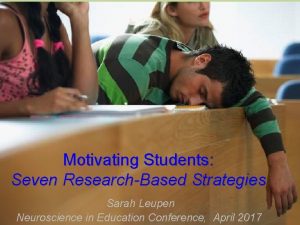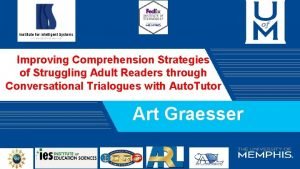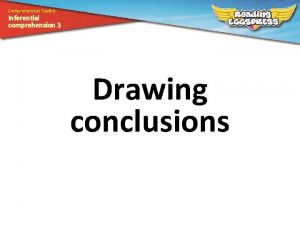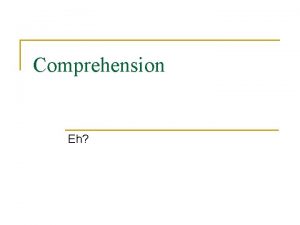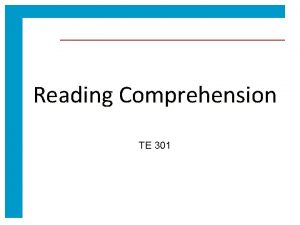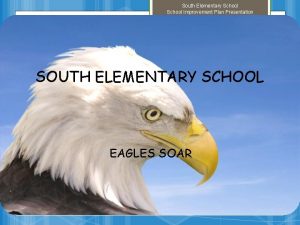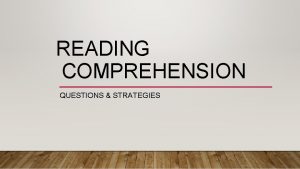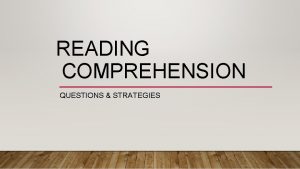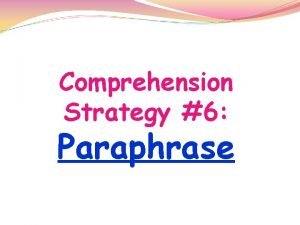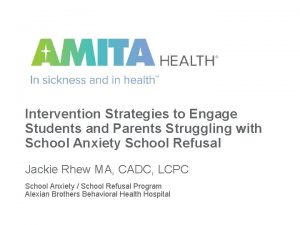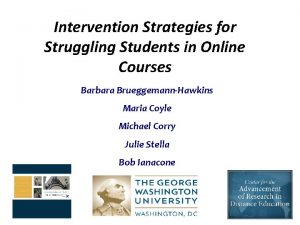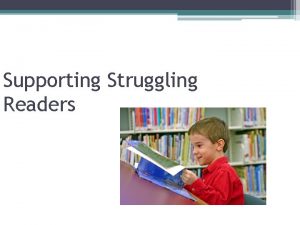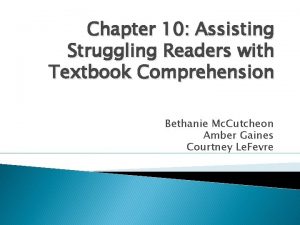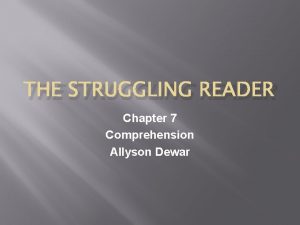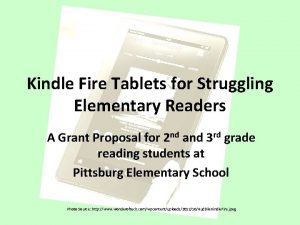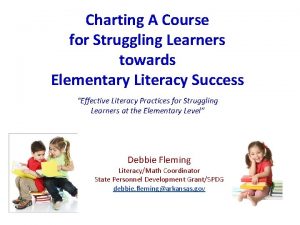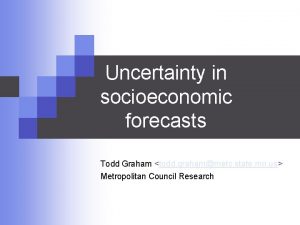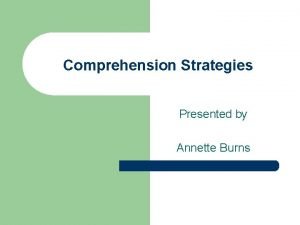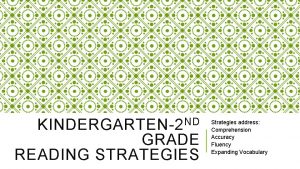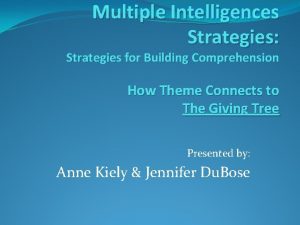Comprehension Strategies for Struggling Students South Todd Elementary

















































































- Slides: 81

Comprehension Strategies for Struggling Students South Todd Elementary 7/30/2012 Betsy Madison Betsy. madison@grrec. ky. gov Betsymadison. com

What is your definition of Reading Comprehension? § “intentional thinking during which meaning is constructed through interactions between text and reader” Durkin (1993) § “the construction of the meaning of a written text through a reciprocal interchange of ideas between the reader and the message in a particular text” Harris & Hodges (1995) § “the process of simultaneously extracting and constructing meaning through interaction and involvement with written language. It consists of three elements: the reader, the text, and the activity or purpose for reading” Rand Reading Study Group (2002) What skills and knowledge are most critical for § “reading comprehension is thinking guided by print” Perfetti (1995) reading comprehension?

Comprehension Continuum Answering Literal Questions Retelling Merging Thinking with Content Acquiring Knowledge Actively Using Knowledge Short term recall Can organize thoughts and put in own words Connecting, inferring, questioning, determining importance, synthesizing, reacting to info Reading to acquire knowledge and insight Actively use knowledge and apply what has been learned to experiences, situations, and circumstances of daily life Does not demonstrate understanding Does not necessarily demonstrate understanding Demonstrates understanding Learn, understand, remember Shows deeper understanding Expand understanding and take action

Proficient comprehension of text is influenced by: Accurate and fluent word reading skills § Oral language skills (vocabulary, linguistic comprehension) § Extent of conceptual and factual knowledge § Knowledge and skill in the use of strategies to improve comprehension or repair it when it breaks down. § Knowledge of text structure and genre § Reasoning and inferential skills § Motivation to understand § Interest in the task and materials §

Successful Readers Continuously monitor their reading to make sure they understand what they are reading Struggling Readers • Fail to use metacognitive strategies as they read • Are often not aware when their understanding breaks down Continuously make • Often lack subjectconnections between the specific prior knowledge content of their reading • Do not automatically and their prior knowledge make connections (life experiences) between what they are reading/learning and what they already know

Successful Readers Struggling Readers Automatically use a • Have limited knowledge variety of effective of strategies for reading strategies before, gaining information during, and after reading. from text • Do not automatically use those strategies Set a purpose for reading and adjust their rate and strategy use depending on the text and content • Often do not enjoy reading • Lack understanding of the utility of reading • Have little history of success to build on

You should suspect comprehension problems if a student… § has know difficulty with phonemic awareness, phonics, and/or fluency § seems to have a weak vocabulary. § is not able to summarize a passage or a book. § might be able to tell you what happened in a story, but can't explain why events went the way they did.

§ can't explain what a character's thoughts or feelings might have been. § doesn't link events in a book to similar events from another book or from real life. § seems to focus on the "wrong" aspect of a passage; for example, he concentrates so much on the details that the main idea is lost.

§ can tell the outcome of a story, but cannot explain why things turned out that way. § does not go behind what is presented in a book to think about what might happen next or why characters took the action they did. § brings up irrelevant information when trying to relate a passage to something in her own life.

§ cannot tell the clear, logical sequence of events in a story. § does not pick out the key facts from informational text. § cannot give you a "picture" of what's going on in a written passage; for example, what the characters look like or details of where the story takes place.

Reasons for Comprehension Difficulties § Lack of appropriate prior knowledge. Inability to relate content to prior knowledge. § Over-reliance on background knowledge. § § Inability to read text fluently. § Difficulty with decoding words; Inability to attend to meaning while reading. § Inability to apply comprehension strategies. § Difficulty with understanding meaning of words. §


Listening Comprehension is the first step § Refers to children’s understanding of stories and other texts that are read aloud to them § Lays the foundation for children to later be able to “understand what they read, remember what they read, and communicate with others about what they read” —National Institute for Literacy, 2001, p. 48

Listening Comprehension. . . is enhanced as children listen to stories that are read aloud, participate in discussions of stories, and engage in other literacy-related activities.

Listening Comprehension Instruction When you read aloud, encourage children to. . . • • • Make predictions Answer questions about the book’s content Read and talk along Share their own interests related to the book content Ask questions of you and their peers Reenact or retell the story

Effective Read-Aloud Sessions Schedule time for read-aloud sessions Use a variety of grouping formats including one-on-one, small groups, and whole class Select different types of books Activate and build background knowledge

Stop a few times for reactions, comments, predictions, and questions Avoid long discussions Don’t stop read-alouds when students can read independently

It’s the talk that surrounds (before and after) the reading aloud of books that is so important for enhancing children’s oral language, vocabulary development, and listening comprehension.

Putting it all together Step 1: Enhance content instruction Step 2: Embedded strategy instruction Step 3: Intensive strategy instruction for struggling students Step 4: Intensive basic skill instruction

Level 1: Enhance Content Instruction § Students with limited literacy skills typically do not acquire enough content knowledge to meet standards “Give me a will fishnot while you’re Comprehension improve, long term, for struggling unlessmy teaching me howreaders to catch content area background knowledge is own. That way I won’t starve improved § to death while I’m learning to § When students have limited literacy, flies. ” for their teachers musttie compensate limited skills in the ways they present content § Rather than COVERING content, try

Level 2: Embedded Strategy Instruction Literacy/Thinking Strategies teach students how to think about what they read § Connect to Prior Knowledge § Visualize/Graphically Organize § Question § Determine § Monitor § Infer Importance in Text for Meaning

Level 3: Intensive strategy instruction for struggling students § Tier 1 Small Group Intervention § Tier 2 or 3 Intervention § Mastery of specific strategies for struggling students § Direct Instruction § Think Aloud § Modeling, Modeling § Name the strategy and positive outcome

Level 4: Intensive Basic Skill Instruction § Phonemic Awareness § Phonics § Fluency § Vocabulary § Screening § Re-Teaching § Intervention

Gradual Release of Responsibility I do it. We do it. Y’all do it. You do it.

Comprehension Strategies

Procedures for Teaching Reading Comprehension Strategies • Direct instruction begins with teachers modeling one strategy at a time (whole group instruction) • I DO IT • Teachers use think-alouds to describe why, when, and how they are using the strategy to make meaning • I DO IT

• Teachers guide whole group in practicing the strategy • WE DO IT • Teachers guide small groups, partners, or individual readers in applying the strategy • Y’ALL DO IT

• Phase out teacher direction until readers apply strategies independently • YOU DO IT • Readers reflect on the benefits and challenges or using the strategy • I DO IT, WE DO IT, Y’ALL DO IT, YOU DO IT

Connect to Prior Knowledge

Intentionally Activating Schema § Text-to-Self § Students Connections compare what they are reading to their own prior knowledge & experiences § Students can better understand character, setting, events, etc… of a story because they’ve had a similar experience § These connections can be made by young students. § Engaging: I like learning when it’s about

§ Text-to-Text § Students Connections compare what they are reading to something they’ve already read. § Encourage connections across genres (article to story, story to poem) § Helps students understand the concept of character, setting § Helps students learn to make predictions, anticipate problems and solutions § These connections can be made by young students

§ Text-to-World § Students Connections compare what they are reading to a Real World Event § May require a little more teacher direction with young students § Helps students better understand both the Real World Event and the text

Prior Knowledge Thinking/Discussion Stems § That reminds me of… § I’m remembering… § I have a connection to… § I have schema for… § I can relate to… § I already know…

“The limits of my language are the limits of my mind. All I know is what I have words for. ” Ludwig Wittgenstein Vocabulary Tools for Activating Prior Knowledge § Word Sorts § Three Way Tie § Frayer § Most Model Important Word


Visualizing/Organizing

Visualizing/Organizing § Good readers spontaneously create mental images, anchored in their background knowledge, as they read. § Good readers use these mental images to give depth and dimension to their reading experience. This engages them and makes the text memorable. § Good readers use mental images to draw conclusions and recall significant details after the text is read. § Good readers modify their mental images as others share their images.

Visualize § Creating § Making § MODEL, a mental image a picture in your head MODEL, MODEL § Ask students to draw the picture they see in their head § Ask students to write about the picture they see in their head

Visualizing Thinking Stems § I’m picturing… § I can taste… §I can imagine… §I can feel… §I can see… §I can smell… §I can touch… §I can hear… § My mental images include…

Organizing § Read with a pencil in hand § Reading § must be accountable Students will be responsible for something as a result of the reading § Write Time Writing is an active vs. passive task § Writing involves the whole body in the process of thinking § Writing clarifies perspective §


Questioning

Questioning § Students ask questions, while reading, … § If they are curious about something in the text § If they want to predict what will happen § If they want to make something more clear § Asking the right questions allows good readers to focus on the most important information in a text.

Questioning Thinking Stems §I wonder… § What if…? § Why…? §I don’t understand… § It confused me when… § How could…?

Questioning the Author § Helps students see text as “someone’s ideas written down” § Deals with text through teacher-posed questions such as “What is the author trying to say? ” or “What do you think the author means by that? ” § Encourages discussion in which students are urged to think about constructing meaning

Question the Author Prompts What is the author trying to tell you? Why is the author telling you that? Does the author say it clearly? How could the author have said things more clearly? What would you say instead? Student Responses

Question Writing Practice § What questions come to mind when you see this picture? § List your questions in your reading journal. § At least one question must be an open question. § At least one question must come from the evaluating, creating, hypothesizing level on your Bloom’s chart.

Question Writing Practice § What questions come to mind when you see this picture? § List your questions in your reading journal. § At least one question must be an open question. § At least one question must come from the evaluating, creating, hypothesizing level on your Bloom’s chart.


Determining Importance

Determining Importance § “…making sense of reading and moving toward insight” (Goudvis & Harvey) What are the most important ideas or information in this reading? What should I remember?

In determining importance, readers identify important ideas and facts, enabling them to mentally organize and thus more easily comprehend the essence of what they are reading.

Keep it or Junk it § Who § How is “driving” this lesson? does the teacher keep the students focused on the important information in the text?

Determining Importance Thinking Stems § What’s important here…. § What matters to me… § One thing that we should notice… § I want to remember… § It’s interesting that…

Most Word Understanding is one of the most cherished goals of education. Teaching for understanding can bring knowledge to life by requiring students to manipulate knowledge in various ways. For instance, understanding a historical event means going beyond the facts to explain them, explore the remote causes, discuss the incident as different people might see it from their own perspectives, and skeptically critique what various sources say.


Monitor for Meaning 57

Monitor for Meaning § Does this make sense? § Does this look right? § Does this sound right?

Fix Up Strategies 1. Keep reading to see if things become clearer. 2. Go back and read it again. 3. Skip it to see if it's important and come back to it. 4. Ask for help.

5. Use the strategies of questioning, inferring, synthesizing, determining importance, and activating background knowledge when encountering problems with the meanings of words, sentences, and passages. 6. Use decoding and world analysis clues from the context.

Writing to Learn to Monitor Meaning § Learning Log/Journal § Dialogue Journal § Double-Entry § Reading § Admit Journal Response Journal or Exit Slips § Notemaking § Re-Write (not notetaking) in own words


Inference

Two core sources of information: In the Book (or video, photo, text…) The answer is there In My Head Background knowledge comes into play. 64

65

66

Author and You: Making Inferences Question 1. Read the question. It Says I Say 2. Find 3. What do information you know from the text about it? to help you. And So 4. Combine what you know with what the text says. 67

Tools for Inferring & Predicting • • • QAR (Questions/Answer/Relationships) Skimming Picture Walks Analogies and Metaphors Classification Cornell Notes


Synthesis The ability to compile information in a different way by combining concepts or parts in a new pattern or proposing alternative solutions

71

Synthesis Thinking Stems § Now I understand why… § What would happen if…. ? § I’m changing my mind about… § I used to think ____, but now I think ___. § My new thinking is…. § I’m beginning to think… § How could you connect…. . ? Talk Moves


Comprehension Screeners § MAP § Dibels § IRI Daze (Individual Reading Inventory) § Classroom Formative Assessment § Text-based questions

Progress Monitoring § Dibels Daze § Comprehension Strategies Monitoring Sheet

Intervention Strategies § FCRR Activities § Comprehension Menu Instructional

Implications for Older Struggling Students § It’s usually a decoding problem § Assume § Use they struggle with vocabulary whatever it takes to teach content Listening Comprehension § Think Aloud § Guiding Questions § Small Group/Individual §

Implications for Older Struggling Students • Literacy Thinking Strategies • Teach content specific text structures • Use highly motivational reading materials

Putting it all together Step 1: Enhance content instruction Step 2: Embedded strategy instruction Step 3: Intensive strategy instruction for struggling students Step 4: Intensive basic skill instruction

Conclusions About Comprehension Instruction TEACH STRATEGIES Do not just ask comprehension questions. Eventually, show students how to combine these strategies and use them concurrently.

How can I help you?
 7 reading comprehension strategies
7 reading comprehension strategies Comprehension strategy posters
Comprehension strategy posters Super 6 reading strategies
Super 6 reading strategies Monitoring comprehension strategy
Monitoring comprehension strategy Super six comprehension strategies nsw det
Super six comprehension strategies nsw det Struggling toward saratoga section 3
Struggling toward saratoga section 3 Struggling in silence
Struggling in silence Remediation of the struggling medical learner
Remediation of the struggling medical learner Chapter 4 section 3 struggling toward saratoga
Chapter 4 section 3 struggling toward saratoga The outsiders adapted for struggling readers
The outsiders adapted for struggling readers Self introduction for elementary students
Self introduction for elementary students Skits on bullying
Skits on bullying Cooperative recess games
Cooperative recess games What image did rizal carved on a piece of batikuling
What image did rizal carved on a piece of batikuling Alvarado elementary south
Alvarado elementary south Cmit south elementary school
Cmit south elementary school Test taking strategies for nursing students
Test taking strategies for nursing students Helping students practice skills, strategies, and processes
Helping students practice skills, strategies, and processes Counseling strategies for gifted students
Counseling strategies for gifted students Sarah leupen
Sarah leupen Old south vs new south streetcar named desire
Old south vs new south streetcar named desire Fspos
Fspos Novell typiska drag
Novell typiska drag Tack för att ni lyssnade bild
Tack för att ni lyssnade bild Ekologiskt fotavtryck
Ekologiskt fotavtryck Varför kallas perioden 1918-1939 för mellankrigstiden
Varför kallas perioden 1918-1939 för mellankrigstiden En lathund för arbete med kontinuitetshantering
En lathund för arbete med kontinuitetshantering Personalliggare bygg undantag
Personalliggare bygg undantag Personlig tidbok
Personlig tidbok Anatomi organ reproduksi
Anatomi organ reproduksi Densitet vatten
Densitet vatten Datorkunskap för nybörjare
Datorkunskap för nybörjare Tack för att ni lyssnade bild
Tack för att ni lyssnade bild Debatt mall
Debatt mall Autokratiskt ledarskap
Autokratiskt ledarskap Nyckelkompetenser för livslångt lärande
Nyckelkompetenser för livslångt lärande Påbyggnader för flakfordon
Påbyggnader för flakfordon Vätsketryck formel
Vätsketryck formel Publik sektor
Publik sektor Lyckans minut erik lindorm analys
Lyckans minut erik lindorm analys Presentera för publik crossboss
Presentera för publik crossboss Jiddisch
Jiddisch Plats för toran ark
Plats för toran ark Treserva lathund
Treserva lathund Fimbrietratt
Fimbrietratt Bästa kameran för astrofoto
Bästa kameran för astrofoto Centrum för kunskap och säkerhet
Centrum för kunskap och säkerhet Byggprocessen steg för steg
Byggprocessen steg för steg Mat för idrottare
Mat för idrottare Verktyg för automatisering av utbetalningar
Verktyg för automatisering av utbetalningar Rutin för avvikelsehantering
Rutin för avvikelsehantering Smärtskolan kunskap för livet
Smärtskolan kunskap för livet Ministerstyre för och nackdelar
Ministerstyre för och nackdelar Tack för att ni har lyssnat
Tack för att ni har lyssnat Mall för referat
Mall för referat Redogör för vad psykologi är
Redogör för vad psykologi är Matematisk modellering eksempel
Matematisk modellering eksempel Tack för att ni har lyssnat
Tack för att ni har lyssnat Borra hål för knoppar
Borra hål för knoppar Orubbliga rättigheter
Orubbliga rättigheter Fr formel
Fr formel Tack för att ni har lyssnat
Tack för att ni har lyssnat Steg för steg rita
Steg för steg rita Ledningssystem för verksamhetsinformation
Ledningssystem för verksamhetsinformation Tobinskatten för och nackdelar
Tobinskatten för och nackdelar Blomman för dagen drog
Blomman för dagen drog Datumr
Datumr Egg för emanuel
Egg för emanuel Elektronik för barn
Elektronik för barn Antika plagg
Antika plagg Strategi för svensk viltförvaltning
Strategi för svensk viltförvaltning Kung dog 1611
Kung dog 1611 Indikation för kejsarsnitt på moderns önskan
Indikation för kejsarsnitt på moderns önskan Romarriket tidslinje
Romarriket tidslinje Tack för att ni lyssnade
Tack för att ni lyssnade Enheter för massa
Enheter för massa Form dikt
Form dikt Inköpsprocessen steg för steg
Inköpsprocessen steg för steg Rådet för byggkompetens
Rådet för byggkompetens Etik och ledarskap etisk kod för chefer
Etik och ledarskap etisk kod för chefer Hur stor skarns är det för ett barn att få cancer
Hur stor skarns är det för ett barn att få cancer Myndigheten för delaktighet
Myndigheten för delaktighet
